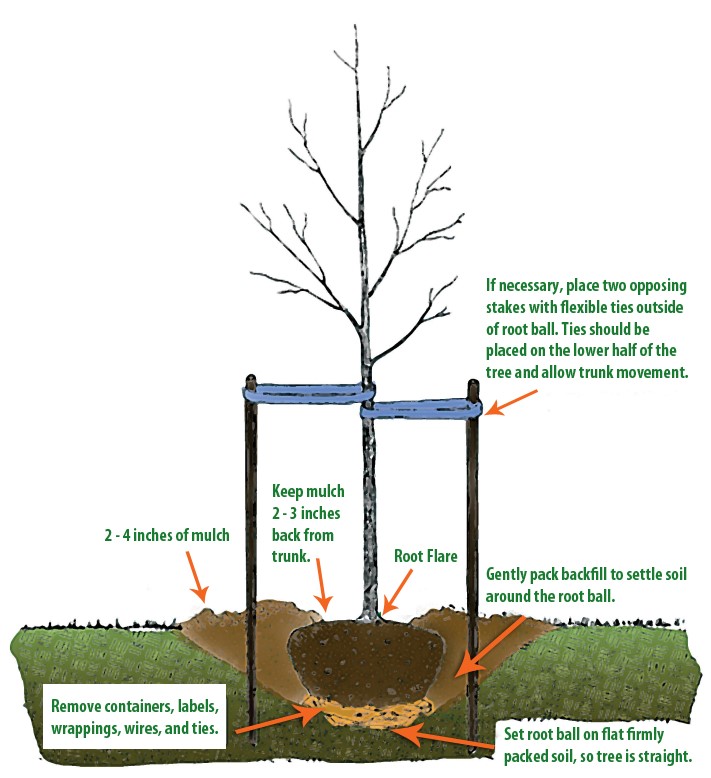Tree Planting Tips
5/11/15
May is Arbor Month in North Dakota – a great time for tree planting! Trees provide shade, wildlife habitat, beauty in the landscape, and add value to your property. It’s tough being a tree in North Dakota, so follow these tips for a successful planting:
- Locate Logically - Select a site that will provide space for the tree – above ground and below. Roots need space, too. Select a small-statured tree like an amur maple or flowering crab for a small space.
- Choose Carefully – Species diversity is the key to resiliency against pests and environmental challenges. The NDSU Plant Sciences Woody Plant Improvement Program has introduced over 50 selections of superior woody plants with increased disease tolerance and winter hardiness (http://www.ag.ndsu.edu/plantsciences/research/introductions.) Choose one of these! Prairie Expedition American elm, Prairie Stature hybrid oak, or Prairie Torch hybrid buckeye. You may have to search to find these trees, but they’re worth the effort.
- Plant Properly – Tree planting is an ancient art, but the methods have changed to reflect the latest and best arboricultural and forestry research. Size and shape of the planting hole have become a very important part of the planting process. Dig the hole WIDE and SHALLOW, just deep enough so the roots are located right beneath the soil surface. Roots need oxygen to absorb water and nutrients. A deeply planted tree may survive, but cannot thrive. Remove the root ball from the container, and set the plant on firm ground. If the roots are pot-bound, tease out some of the roots and slit the sides of the rootball with a knife. Shovel backfill into the hole, continuing until roots are covered.
- Fertilize Frugally – Don’t fertilize at the time of planting – it may cause root injury. Fertilize lightly next year.
- Water Well – use a low pressure hose to water and settle the soil. When done, the planting area should be well-soaked and moist backfill should barely cover the top of the rootball. Frequency of watering depends on the soil, not the calendar. Deep, infrequent watering is better than shallow, frequent sprinkling of the soil surface.
- Mulch Meaningfully – Mimic Mother Nature by placing an organic mulch of wood chips or shredded leaves around the tree. A layer 3-4” deep, out to the dripline of the tree and away from the trunk will help conserve moisture, inhibit weed growth, and prevent mower damage.

Diagram from International Society of Arboriculture
www.treesaregood.com
Watch your tree grow. Happy planting!
Gerri Makay
Community Forestry Program Manager
ND Forest Service
Gerri's office is located at the CREC.


